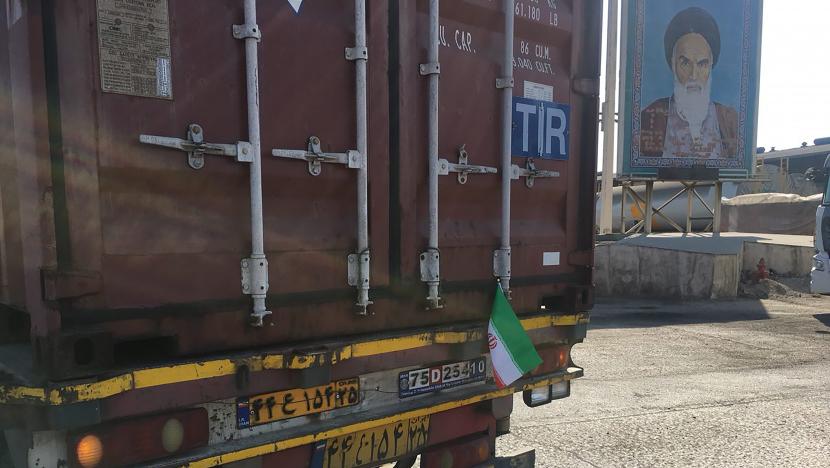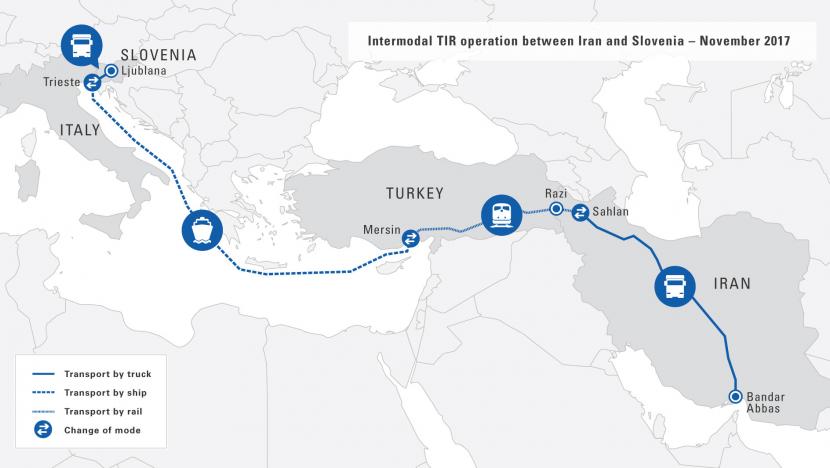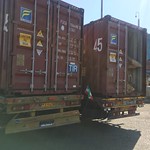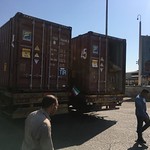The first successful intermodal TIR customs transit system operation involving road, sea and rail on a corridor linking Europe to the Middle East has demonstrated a 5-day time saving, with significant potential to reduce costs and boost trade.
Starting in Slovenia’s Ljublana and arriving in Bandar Abbas in Iran, the container transited through Italy and Turkey, crossing the Mediterranean.
Demonstrating TIR as the best transit tool for the long-haul intermodal transport of goods, the pilot initiative highlights the potential for full cross-modal operations in this and other regions.
Newly ratified countries in particular, can benefit from the intermodal standard at the outset of TIR implementation.
The streamlined operation was successfully coordinated by IRU member, Iran Chamber of Commerce, Industries, Mines & Agriculture (ICCIMA) in cooperation with Iranian Customs, and included a road leg from Slovenia to Italy, followed by a sea crossing from the port of Trieste in Italy to the port of Mersin in Turkey.
On arrival at the port of Mersin, the container was loaded onto rail, through to the Iranian customs office at Razi, where TIR was reactivated, and continued until the Sahlan Customs office and rail terminal in Iran (around 100 km from Razi) where the container was placed onto an Iranian truck and continued its journey to the destination port of Bandar Abbas.






















